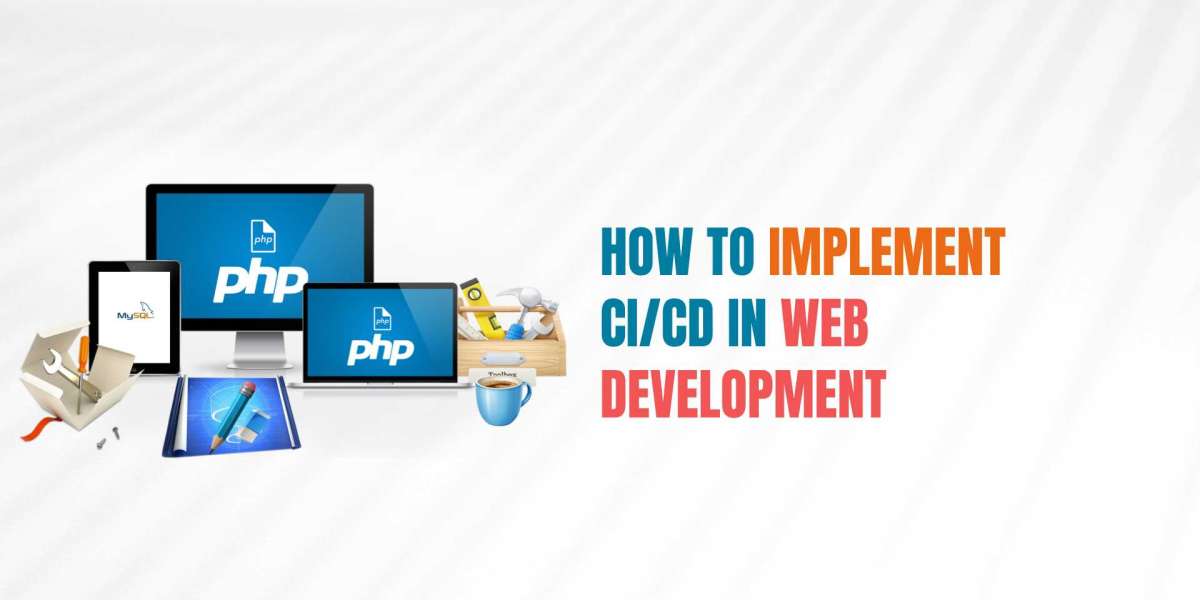In the fast-paced world of web development, delivering high-quality web applications quickly and efficiently is a top priority for businesses. The demand for continuous delivery of updates, bug fixes, and new features requires an effective approach to streamline the development and deployment process. This is where Continuous Integration (CI) and Continuous Delivery (CD) come into play.
CI/CD has become an essential practice for development teams, allowing them to automate, test, and deploy code changes rapidly. It ensures a smooth and consistent flow from development to production, minimizing downtime, reducing human errors, and improving overall productivity.
In this guest post, we will explore how to implement CI/CD in web development, covering the key steps, best practices, and how Quality Web Development Providers can help streamline this process to deliver robust and reliable websites.
What is CI/CD?
Before diving into the implementation process, it’s essential to understand what CI/CD means.
Continuous Integration (CI) is the practice of frequently integrating code changes from multiple developers into a shared repository. Each integration is verified by automated builds and tests, ensuring that new code does not break the existing functionality.
Continuous Delivery (CD) is an extension of CI that automates the release process. Once code passes all tests in the CI stage, it is automatically prepared for deployment. CD ensures that code changes are ready for release to production at any given time.
Together, CI and CD form a robust pipeline that allows development teams to deliver software more efficiently, with fewer errors, and with the ability to quickly adapt to user feedback or changing business needs.
The Importance of CI/CD in Web Development
In web development, CI/CD is crucial for maintaining a consistent and error-free development environment. Websites and web applications require frequent updates, including feature additions, security patches, and performance improvements. Without a solid CI/CD pipeline, releasing these updates can lead to downtime, bugs, or other issues that negatively affect user experience.
By automating the integration and delivery processes, CI/CD helps to:
- Speed up development cycles: Developers can deliver code faster with automated testing and deployments, reducing the time between writing code and releasing it into production.
- Improve code quality: Automated tests ensure that new code is stable, functional, and doesn’t introduce new bugs.
- Reduce manual intervention: Automation eliminates the need for manual testing and deployment, allowing developers to focus on coding and innovation.
- Minimize downtime: With automated deployments and rollbacks, websites experience less downtime, ensuring continuous availability for users.
- Enhance collaboration: CI/CD encourages collaboration between developers, testers, and operations teams, streamlining communication and improving overall productivity.
Key Steps to Implement CI/CD in Web Development
Now that we understand the importance of CI/CD, let’s dive into the steps to implement it effectively in web development.
1. Set Up a Version Control System
The foundation of any CI/CD pipeline is a version control system (VCS). A VCS allows multiple developers to work on the same project simultaneously while keeping track of changes, ensuring that code is safely stored and versioned.
Popular VCS platforms like Git are essential for managing code repositories. They enable developers to branch and merge code, making it easier to handle multiple features or bug fixes at once. Ensure that your web development team is using a VCS and following best practices for branching and committing code.
2. Automate Builds with a CI Server
Once your version control system is in place, the next step is to automate builds. A CI server automates the process of compiling code, running tests, and generating build artifacts. This ensures that every time new code is committed to the repository, it is automatically tested and built, catching issues early in the development process.
There are several CI tools available, such as Jenkins, CircleCI, and Travis CI. These tools integrate seamlessly with Git and other VCS platforms, enabling you to automate the build process and receive feedback immediately if something goes wrong.
By automating builds, your team can focus on writing new features while being confident that their code will be tested and validated continuously.
3. Implement Automated Testing
Testing is a critical component of the CI/CD pipeline. Without thorough testing, automated deployments can lead to faulty code being released to production. Automated tests help catch bugs, performance issues, and other problems before they affect the end-users.
There are different types of tests that can be implemented in web development, including:
- Unit tests: These test individual components or functions in isolation, ensuring that they work as expected.
- Integration tests: These check how different components of the web application interact with each other.
- End-to-end tests: These simulate real user interactions with the application to ensure that the entire system functions as expected.
Quality Web Development Providers understand the importance of automated testing and ensure that proper test coverage is in place for every feature developed. Automated testing frameworks like Selenium, Cypress, and Jest can be integrated into your CI pipeline to run tests every time new code is pushed.
4. Set Up Continuous Delivery
After ensuring that code passes all automated tests, the next step is continuous delivery. In this stage, the tested code is automatically prepared for deployment to a staging or production environment.
To implement CD effectively, you’ll need a deployment tool that can handle automated deployments. Tools like Docker, Kubernetes, or AWS CodeDeploy can help streamline the process of moving code from development to production. These tools ensure that deployment is consistent, reproducible, and automated, reducing the risk of human error.
For web development, it’s also important to ensure that the deployment process is non-disruptive. By using techniques such as blue-green deployments or canary releases, you can deploy new features without causing downtime or negatively affecting users.
5. Monitor and Optimize Performance
Once your CI/CD pipeline is in place, monitoring your website’s performance becomes crucial. Automated monitoring tools can provide real-time insights into how your application performs after every deployment. This ensures that any performance issues, security vulnerabilities, or user experience problems are identified and addressed promptly.
Popular monitoring tools like New Relic, Datadog, and Prometheus can be integrated into your CI/CD pipeline to track key performance metrics such as load times, server response, and database performance. With continuous monitoring, you can make informed decisions about optimizing your web application and ensuring its stability.
6. Continuous Improvement
The final step in implementing CI/CD is continuous improvement. CI/CD is not a one-time setup; it requires ongoing optimization to ensure that your pipeline is delivering the best results.
Encourage your development team to regularly review the pipeline, identify bottlenecks, and make adjustments where necessary. This could involve optimizing build times, improving test coverage, or refining deployment strategies.
Continuous improvement ensures that your CI/CD pipeline evolves with your web development needs, leading to faster delivery times, better code quality, and a more efficient workflow.
Best Practices for CI/CD in Web Development
To make the most of CI/CD, here are some best practices to follow:
- Keep builds fast: Long build times can slow down the entire development process. Optimize your builds to ensure they run as quickly as possible.
- Ensure comprehensive test coverage: Automated tests are essential, but they must be thorough. Ensure that your tests cover all critical paths of your application.
- Use feature toggles: Feature toggles allow you to deploy new features to production while keeping them hidden from users until they are ready for release.
- Automate rollbacks: In case of deployment failure, automate the rollback process to minimize downtime and prevent errors from affecting users.
- Foster collaboration: CI/CD is most effective when developers, testers, and operations teams work together. Foster a culture of collaboration to ensure smooth and efficient processes.
The Role of Quality Web Development Providers
Implementing CI/CD can be a complex task, especially for businesses that lack in-house expertise. This is where Quality Web Development Providers come into play. These providers bring the technical knowledge and experience needed to set up and maintain a robust CI/CD pipeline.
By partnering with a professional web development provider, you can ensure that your CI/CD process is tailored to your specific needs, from automated testing and deployment to performance monitoring. These providers also stay up-to-date with the latest tools and technologies, helping you stay competitive and deliver top-tier web applications.
Conclusion
CI/CD is a game-changer for web development, enabling teams to deliver high-quality web applications faster, with fewer errors and more efficiency. By following the steps outlined above—setting up a version control system, automating builds, implementing automated testing, and continuously optimizing—you can streamline your development process and enhance the reliability of your website.
For businesses looking to implement CI/CD in web development, Quality Web Development Providers can be invaluable partners. They offer expertise in setting up effective CI/CD pipelines, ensuring that your web applications are delivered quickly, efficiently, and with the highest quality standards.
In today’s competitive digital landscape, adopting CI/CD is not just an advantage; it’s a necessity for delivering consistent and reliable web experiences.







